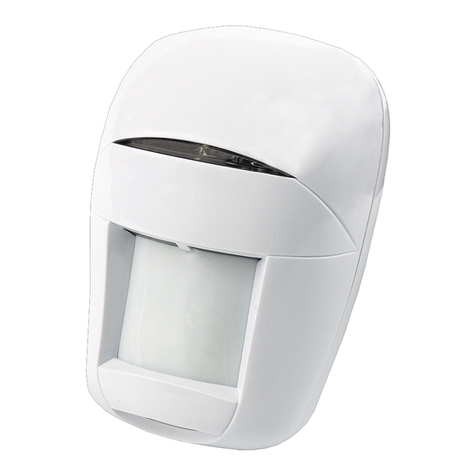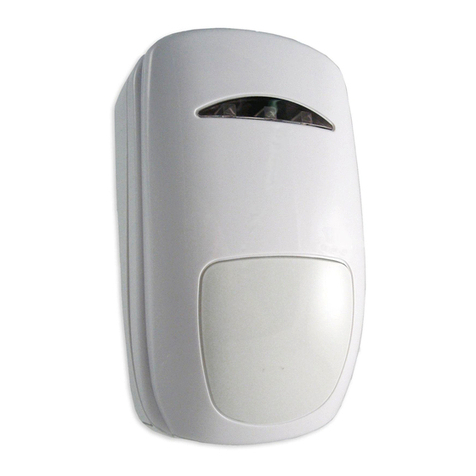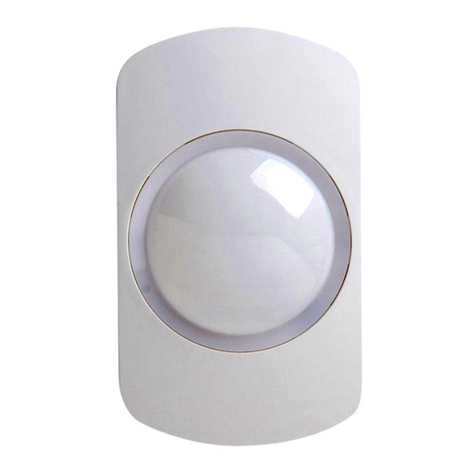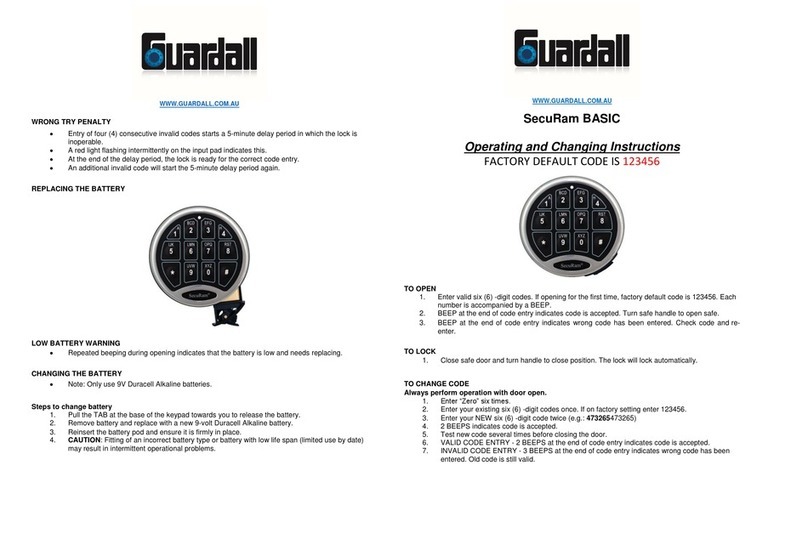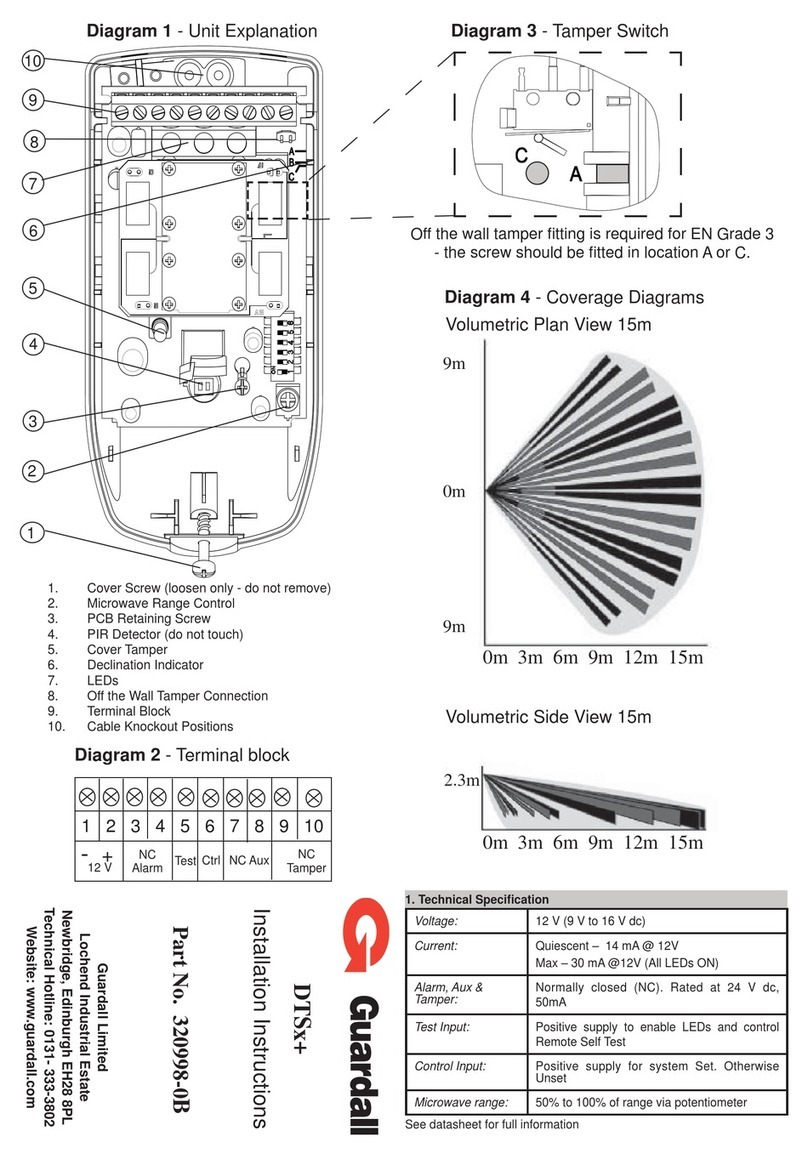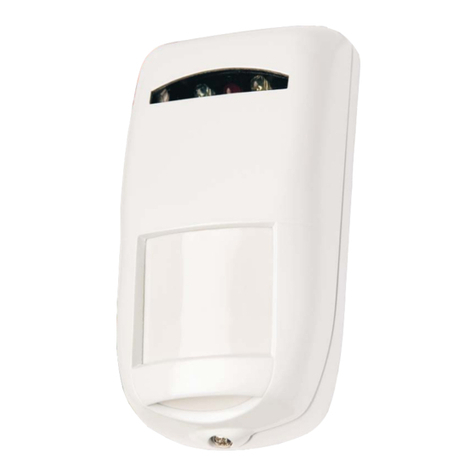
- Remove the electronics module (5) by pressing firmly on the top
sides of the module and lifting clear of the locating lug (16).
Should you wish to provide a pet alley in the coverage area, then loosen
the two window / mirror locking screws (3) and remove the front window
(20). Remember to break off the front strip from the pet alley blanking
piece when fitting it into a Vega DX/AM Volumetric unit. The front strip
should remain in place when fitting the pet alley blanking piece into a
Vega DX/AM Long Range unit.
To clip the pet alley blanking piece (23) onto the sneak mirror (19) hold
the Pet Alley blanking piece by the centre finger tab and insert the two
side lugs into the holes provided on either side of the sneak mirror. Push
in until located securely.
Note: Break off the front strip of the Pet Alley blanking piece when fitted
to a Volumetric unit. Leave the strip intact when fitting to a Long Range
unit.
When using the pet alley blanking piece, the mirror should be set to
position "A" on the Vega DX/AM Volumetric unit and position "B" or "C"
on the Long Range unit. The pet alley blanking piece will mask all but
the main zones of the Vega DX/AM unit. The front window should then
be refitted and the window/mirror locking screws tightened. You should
note that the pet alley blanking piece cannot be used with the Vega DX/
AM Curtain Model.
6.2 Mounting Vega DX/AM
Wire as appropriate with reference to the applicable connector block
illustrated in Diagram 3.
Vega DX/AM can be corner or wall mounted . Correct corner mounting
of the unit will allow +/- 5° horizontal adjustment.
Vega DX/AM has 3 sets of cable entry holes and these are shown in
Diagram 2. Note that there are 2 spare terminals (12) on the Vega DX/
AM back cover (14) for looping through cables etc.
6.3 Wall Tamper
To ensure correct operation of wall tamper, insert screw into wall tamper
cover (10), via either the corner or wall mounting knockouts, which are
shown in Diagram 2. Wall tamper protection can be achieved when the
unit is either corner or wall mounted.
6.4 Mirror Range Setting
The mirrors on the Vega DX/AM Volumetric, Long Range and Curtain
units have been set to position "D". Coverage patterns are shown in
Diagram 6 (Beam Pattern Diagram). The mirror settings either side of
position "D" give an approximate +/- 2° change in the vertical angle of
the mirror.
To adjust the mirror setting, loosen the two window/mirror locking
screws, but do not remove the window. Move the mirror adjustment tabs
(17) on each side to the desired setting and tighten the window/mirror
locking screws.
6.4.1 Volumetric and Long Range Units
Diagrams 4 and 5 show examples of the recommended mirror setting
for the intended coverage and mounting height of the Vega DX/AM
Volumetric and Long Range models. The figures on the left hand
column and right hand row illustrate the respective mounting heights
and ranges in metres. The figures in brackets indicate the declination
angle (from the horizontal) of the centre main zone of Vega DX/AM.
To use the graphs, simply select the letter which corresponds to the
intended mounting height and range. For example, installing a Vega
DX/AM Volumetric model with a required mounting height of 4m and
intended range of 15m would mean that the letter "G" should be
selected.






